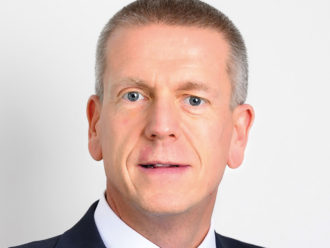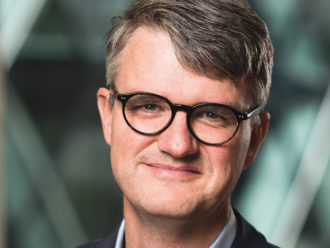You joined NOW: Pensions in March. How have the first three months been?
Time has flown by and it has been great. Now that the Covid restrictions have been relaxed, I have been able to meet many of my colleagues in our London and Nottingham offices. Starting a new role and seeing if it will match your expectations is always a little daunting. One of the attractions of joining NOW: Pensions is the work it has done on closing the gender pensions gap.
It’s an organisation that is championing change. It has been heart-warming to meet my colleagues behind this work and seeing their passion for the campaign. Our report on the gender pensions gap was published in early June and the work that has gone into it has been fantastic. It is probably shocking to most that women need to start saving from the age of four to have a pension that is worth the same as the average man at retirement. It brings home the cumulative impact of taking periods away from the workplace, such as for childcare.
Does this mean that women need to follow a different investment strategy?
When looking at the issue we not only consider member outcomes but also the journey to retirement, where the default investment strategy is set to be resilient to different market conditions.
We also believe the issue is larger than this, which is why we have five policy proposals that set out what can be done to help close the gender pensions gap. Whether you are male, female or part of the under-pensioned population, there could be periods in your life where you are not working and therefore not contributing towards a pension.
Ideally, the investment strategy should not favour one set of market conditions over another. It should not matter when you contribute. If you are not contributing consistently then you are not contributing through different market conditions. Considering those risks and how they interact with each other is important.
Unlike some other master trusts, NOW: Pensions has a single default fund. Why do you only offer members access to one diversified growth fund and a retirement countdown fund?
Engagement with our members tends to be low. This is due to the fact that they could be in and out of work. As a consequence, it is better for them to have a single investment choice. We also find there is less awareness of pensions, which is probably the case across the auto-enrolment industry. So, we want to make sure we are focused on working as hard as we can with that pot of money, whether it is one of many pots or a whole pot.
That is why we focus on delivering a balanced-risk approach. Ultimately, when it comes to our members saving for their retirement, simplicity can be helpful and we want to give them a robust approach.
What is your response to trade union ADCU raising a challenge on behalf of Uber drivers about the lack of a Shariah-compliant fund?
Speaking generally, we will always listen to our members and their employers. We regularly evaluate if our offering is right for them. We assessed the concept of having one strategy at our last investment strategy review and concluded that it is still the best option. However, Uber became a participating employer after the last review. Their drivers specifically requested a Shariah-compliant fund, so the trustees have consequently decided to make a Shariah compliant fund available.
How are you integrating ESG into your default strategy?
ESG is considered in every investment decision we make. This approach includes explicit responsible investment integration, which is becoming more visible.
We have held green bonds in the portfolio for many years as part of NOW: Pensions’ support for financing cleaner energies. These investments are part of our Interest Rate Investment Group. As part of our investment review, we looked to broaden the eligible bonds beyond green bonds to include social and
sustainable debt.
When we first introduced green bonds to the portfolio there was not the scale in the market for the concept of social and sustainable debt. But we feel strongly that the topics we are championing, such as gender equality, should be aligned with our investment strategy.
So when it came to evolving the investment strategy last year, we considered three core objectives: risk, return and responsible investments. We look to invest all assets responsibly and investing explicitly so members could see how we are making an impact, for example, through climate tilting or green
bonds. At the time we also publicly committed to a net-zero target. Cardano Risk Management, of which NOW: Pensions is part of, has already pledged to reach net-zero greenhouse gas emissions in its investments by 2050, with a 50% emissions reduction by 2030.
You also set a target that half of your portfolio would be invested responsibly by the end of 2021. How did that go?
That target was met shortly after the revised investment strategy was implemented, in June 2021. For example, within equities we added a global ESG fund that tilt exposures to companies with positive ESG credentials. This was implemented by Cardano, our investment manager, using third-party asset managers to execute it.
We have talked about green bonds and that we now also invest in social and sustainable bonds. We have made a couple of other tweaks to this. For example, we now invest in a liquid environmental fund and are no longer directly exposed to fossil fuels. Another area we have been working on for some time is the ask Force on Climate-Related Financial Disclosures (TCFD). TCFD will make the largest pension schemes set out crystal clear, in black and white, where their emissions are and what they are going to do about them.
Some requirements do not apply this year, which will make 2023 particularly interesting when schemes start measuring their progress against their
objectives.
Another result of your investment review is that you have dropped your cautious approach and are increasing your allocation to equities whilst reducing your bond exposures. Why is that?
We used to have a return target of cash plus 3% per annum. When we worked with the trustees on the investment strategy, it was felt we should take more risk in expectation of achieving better outcomes for our members. So we are targeting a higher risk now and as a consequence, a higher return [Consumer Price Index (CPI) plus 4%].
Is the decision to take more risk also driven by rising inflation?
Inflation was not a factor in changing the benchmark. If anything, it has become harder for us because we changed our target from cash plus to CPI plus ahead of a period of high inflation. The motivation to move to an inflation-linked benchmark comes back to member returns and the purchasing power their pension pot will have when they retire. If we had to put their money in the bank, the likelihood is that their purchasing power will decrease, and we want it to increase.
Will you also change your allocation within the equity strategy?
We structure our equity allocation more passively than looking to time factor rotation or stock selection. You could also look at it as a top down approach. We also look to ensure that we have good distribution across global economic markets.
To what extent is your equity strategy managed internally?
Cardano is our investment manager. It manages part of the equity investment group in house, using third-party asset managers for the rest. This is consistent
with our liquidity fund where we appoint asset managers. The sustainable bonds portfolio, however, is managed by Cardano itself.
What assets are you using to hedge your inflation risk?
Notable inflation allocations feature in the diversified growth fund and form part of our balanced investment risks. There has long been an assumption that investing in equities and bonds delivers diversification. However, it is becoming increasingly recognised that in periods of heightened market volatility those correlations break down. This is something we analysed as part of our investment strategy review.
The question is: how do we overcome these challenges? We wanted an investment strategy that is simple and straightforward to communicate to our
members. That is why the balanced-risk approach includes a combination of equities and inflation-hedging assets, amongst others.
Within the portfolio, we use a combination of inflation-linked bonds, but we also look at commodities because of their inflation sensitivities. We revisited this
when deciding to exit fossil fuels and to hold a basket of commodities, such as metals that were better aligned to the transition to a greener economy.
Are you considering adding any illiquid or alternative assets to your portfolios?
We are not looking at adding them at present. Our investment manager allows investments into such assets in our diversified growth fund and this is something we keep an eye on. The trustee also regularly reviews the future of the investment strategy. What are the main obstacles for the investment strategy: the charge cap or daily pricing?
They are important but we consider these challenges as something to overcome. Alongside pricing and operational issues, there is another consideration, member assets could come and go and the level of illiquidity we carry with them changes. This is something to consider whenever we introduce new assets to the portfolio.
If you expect a recession, will you adjust your investment portfolio?
From the S&P500 entering into bear market territory to the dollar jumping and the US yield curve inverting, there are definite signals pointing towards recession. That being said, we are investing for the long term. By adopting a risk-balanced approach, we are looking at steady accumulation in real terms through those various market phases. We are not looking to tweak the investment strategy in an attempt to time the market.
When it came to reviewing the investment strategy with the trustees, an important consideration was how it performs in heightened volatile markets. Markets
have generally been favourable in recent years, but that will not always be the case. Our investment manager reviewed market data stretching back more than 100 years. When looking at scenarios, it is important to remember that what happened in the past may not replicate itself perfectly in the future.
So we are keeping an eye on everything and continue to monitor the portfolio closely. But the approach we have adopted was designed with potential risks, such as a recession, in mind.





Comments